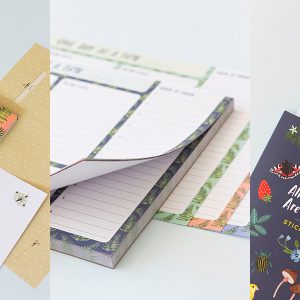You’ve been meaning to clear out that shed for a while now, but you still haven’t gotten around to it. Why does this happen? More importantly, how do you find the drive to get it done?
- Writing and labelling helps
“Your mind is for having ideas, not holding them,” says American historian and bestselling author David Allen. An international hit, his book Getting Things Done is not just about being productive in terms of work, it’s also about achieving results on all fronts of life, from relationships to renovations.Allen says that you should first get your plans and ideas out of your head and down on paper.This creates space in your mind, and gives you energy so that you’ll get more done in the end. You can do this at a set time of the week or day, or do it as soon as something comes to mind.Next, label everything you have written down. Things that will take lots of time or are still a bit vague are labeled “Projects.” For example, “Read books more often,” “Remodel the kitchen” or “Take a trip to Australia.” Other labels include “Now,” “In the planning,” “Wait” and “Do this week.” The things in the “Now” category can be done in a couple of minutes, such as sending a simple e-mail.Clearing out the shed is a good example of an “In the planning” action, which you could put on the calendar for two weeks in the future, for example.
Chances are that this time, you will keep the time free and really swing into action. Other things just have to “Wait.” For example, if you’re trying to schedule a dinner with three friends, that could take longer to arrange. Finally, you have the “Do this week” label for buying cat food or going to the pharmacy. Make a separate list of these items, keep it in your agenda and do these things when you have a spare half hour.
- The more concrete, the better
Plans and ideas that are still a bit sketchy or vague often don’t get done. But they may be crucial to your enjoyment of life. Take for example the things on your “Projects” list (see insight 1). If you want to make each plan a reality, then try to follow these steps:✻ Reserve time to work on it. Not an hour, but an afternoon or an evening.
✻ During the time you’ve reserved for this, try to clarify exactly what you want (possibly with the help of someone else). For example, “Travel around Australia for three weeks in a rented camper van” or, “Go camping by the beach for at least a week.”
✻ Research your project. What does it require? Money, information, help from other people? Work it out and write it down.
✻ Break your plan into clear, well-defined steps. For each step, write down the appropriate action. You can also make smaller projects more concrete by breaking them up into smaller pieces. “Read more,” for example, becomes, “Make a list of five books I want to have read within six months,” “Make time to visit the library” and “Reserve time for reading every Tuesday evening.” - Small steps are worth a lot
Many people want it all, but end up with nothing. It’s just too big in their heads. Don’t get deterred by the scale of your project. Of course, ultimately you want the whole shed to be spick and span, but one shelf (almost) empty is also an achievement. Seeing what you’ve achieved is motivating, even if the result starts off small.
- Six more insights on how to get started can be found in Issue 14.
Text Catelijne Elzes Photography Green Chameleon/Unsplash.com














